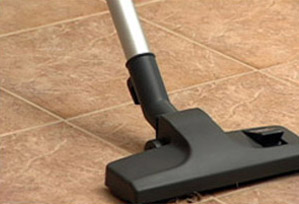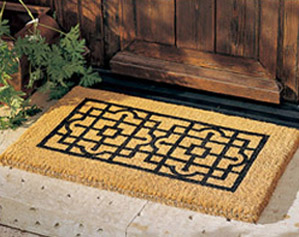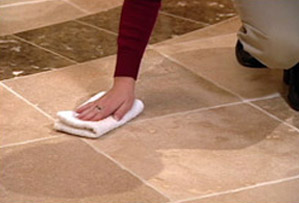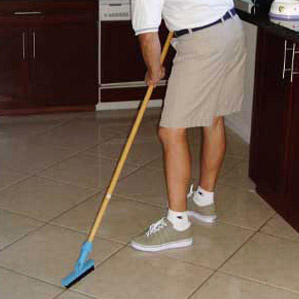Ceramic Tile Maintenance
When it comes to your home’s maintenance, don’t overlook your flooring.
Floor coverings are a major part of your home, impacting interior beauty, design, décor, comfort and livability.
So it stands to reason that they be included on any home maintenance “to do” list.
Taking care of your ceramic tile flooring investment will reward you and your home for many years to come.
Plus, knowing what’s expected of you regarding tile flooring upkeep can be a determining factor in your purchase choices.
So read on and learn the many ways you can maintain your ceramic tile, both today and tomorrow.
Ceramic tile can be swept but not beaten.
It’s important to sweep a tile floor regularly. Dirt can adhere to the surface of tile, particularly styles with a textured surface.
Regular sweeping loosens and removes most of this dirt. So keep on sweeping.
Don’t forget those labor saving devices.
Feel free to use a vacuum cleaner to sweep, but be sure to use one without a beater bar to avoid dulling and scratching the ceramic tiles.
However, the attachments that accompany vacuum cleaners are useful to collect dirt along edges or in between tiles.
It’s a dirty world out there.
So be sure to use walk-off mats to minimize and contain dirt being tracked in at entryways. And shake them often.
This reduces the amount of dirt being tracked across the tile floor, and reduces the wear to the finished surface.
Make it a point to know these cleaning tips.
Ceramic tile floors should be damp-mopped regularly using the manufacturer’s recommended grout and tile cleaners.
For heavier soil, you can spot clean the floor with a sponge or clean cloth using the recommended cleaners.
Rinse well and wipe dry for more shine. Textured tiles may require mild scrubbing with a soft brush or electric polisher/scrubber.
After cleaning with a mild detergent rinse thoroughly with clean, warm water to help remove any leftover residue.
If needed, wipe dry with a clean towel to remove any film.
For soft water situations you may need to use an all-purpose cleaner. Apply to the floor, let stand for 3 - 5 minutes, lightly scrub with a sponge, rinse well and you’re home free – dirt free, too.
Do keep in mind these dos and don’ts.
Avoid using steel wool, scouring powders, or other abrasives that can scratch the finish of the tile.
Don’t use bleach or ammonia based cleaners, as these products can discolor your grout if used too often.
Also, do not clean glazed tile with oil-based cleaners.
Be fast on your feet. Try to clean up spills as quickly as possible so that the grout or tile doesn’t become stained.
While ceramic tile is considered very durable, it’s not indestructible and may crack or chip under extreme force.
Take the proper precautions when moving heavy objects across your tile floor. Get a small army to help you move that large piano.
Cover furniture and table legs with protectors to guard your floor against damage.
Keep in mind that if a repair is necessary in the future, the replacement product may be a slightly different dye lot and/or texture than the initial installation.
However, the good news is that, with time and usage, the repair will probably blend in with the original product.
Last, a word on caulking and sealing.
Once the tile has been laid and grouted, it’s your responsibility to maintain areas exposed to water by caulking.
Caulking will prevent expensive subsurface damage, as well as keep the tiled areas looking their best.
Depending on your lifestyle, sealing new tile and grout may be an option.
After the installation process is complete and the grout has had ample time to cure, sealing the grout and tile can provide protection from dirt and spills by slowing down the staining process.
Today there are also innovative grout colorants you should be aware of.
These products can transform the original color of grout and in some cases can act as a form of sealant. Please be aware that non-epoxy grout joints should be treated with a silicone sealer.
Consistent and correct upkeep will keep your ceramic tile floor beautiful, inviting and durable for years to come.
Depend on us to deliver complete, dedicated customer service during your tile shopping experience and outstanding, professional advice following installation.
We hope that the information we’ve provided here leads you to a clearer understanding of how to maintain tile flooring.




